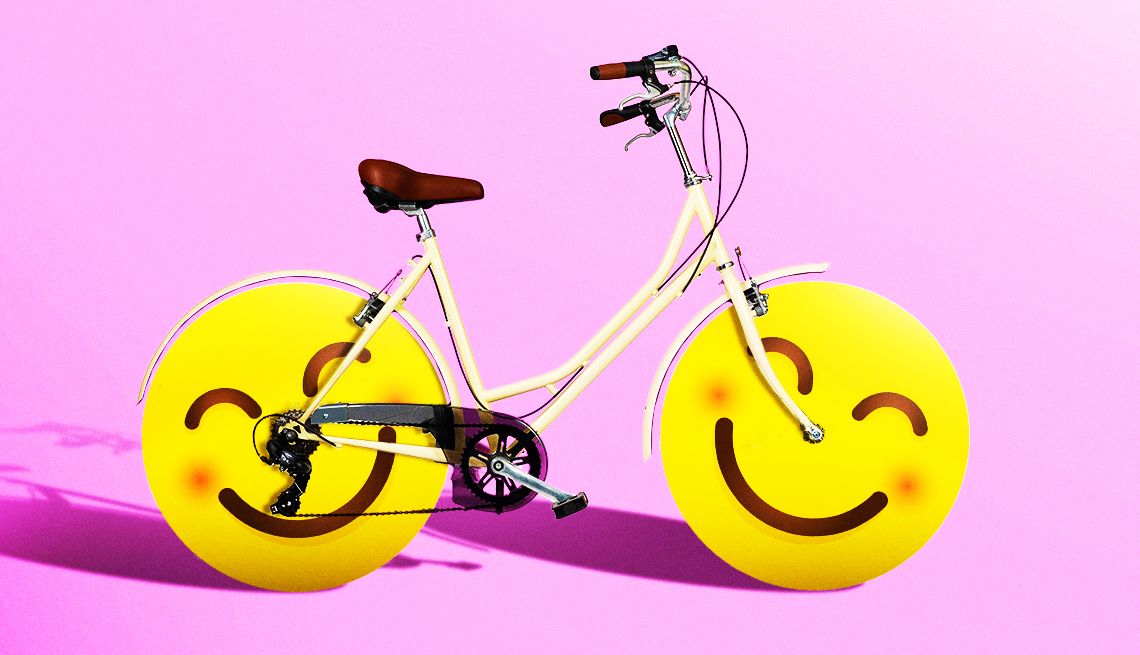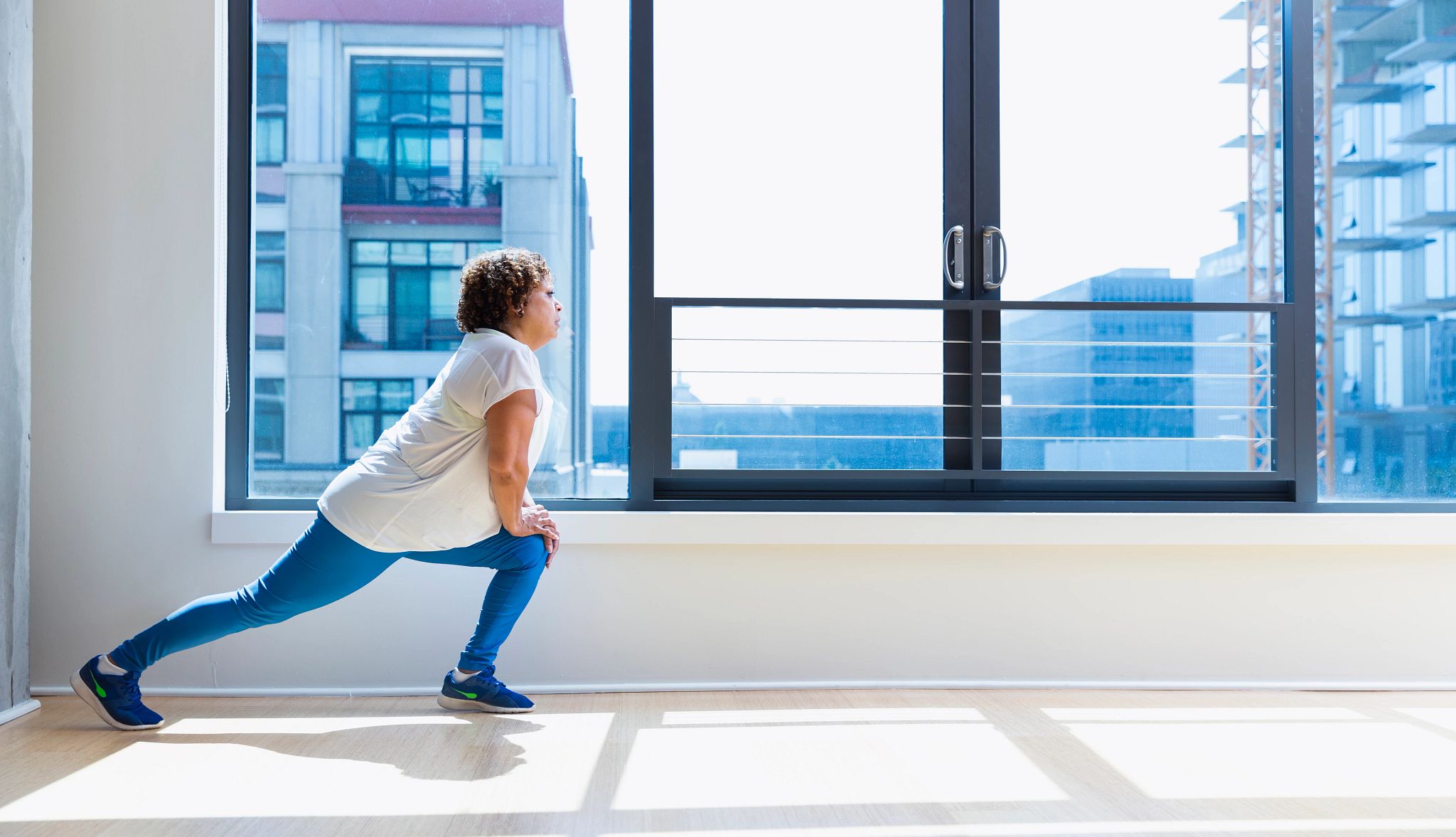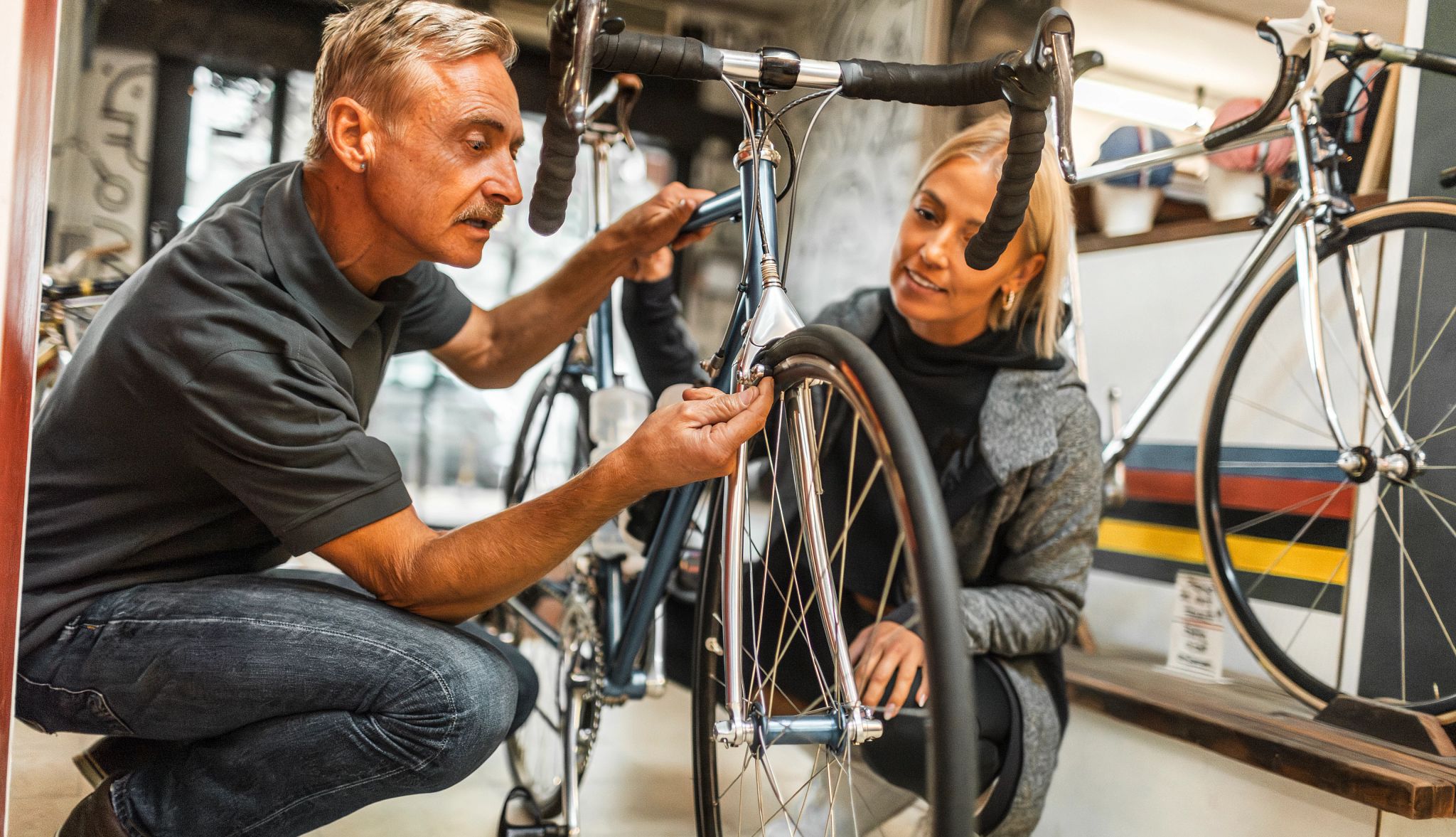AARP Hearing Center


Key takeaways
- Are you fit enough?
- Choose your bike
- Comfort and safety considerations
- Hit the road (or trail)
- Be safe
- Maintenance and troubleshooting
- Make it social
For older adults, low-impact cycling can provide many health benefits, including heart strength, better balance and stronger muscles. It may even slow cognitive decline and the progression of dementia. Plus, it gets you outside, which can boost your mood and mental state.
Whether you want to do it for pleasure, fitness or transportation, these 31 tips will help you find the right bike and make cycling easier, safer and more fun, especially if you’ve never ridden a bike or haven’t in years.
ARE YOU FIT ENOUGH?


1. Do a physical assessment (and consider one from your doctor)
Before you start cycling, ask yourself a few questions: Am I fit enough to ride a bicycle? Am I comfortable getting on and off a bike, coming to a stop and waiting? Can I turn my head to see or hear what’s coming behind me?
Still unsure if you’re physically and mentally ready to start bike riding? Talk to your doctor. A physical checkup may be in order, especially if you have any chronic conditions such as diabetes, heart disease or kidney problems, or risk factors like high blood pressure, says Joshua L. Keller, an assistant professor of kinesiology at the University of North Texas in Denton, Texas.
2. Do some pre-ride training
If you haven’t been on a bike in a while, you may need to retrain your body. Start riding in an empty parking lot, a basketball court or a playground, away from pedestrians, cars and large obstacles, recommends Alison Dewey, director of education for the Washington, D.C.-based advocacy group League of American Bicyclists. Practice getting on and off the bike, steering, turning, coasting and braking.
For adults age 50-plus, exercise guidelines recommend 150 minutes a week of moderate-intensity exercise like bicycling. “If you have the ability and time, doubling that to 300 minutes would be even better,” Keller says. Create a routine of riding short distances in an easy gear and slowly ramp up, he suggests. Listen to your body, though. If aches, pains and muscle strains tell you to ease back, then ease back.
3. Make some lifestyle changes
If you plan to start cycling or increase your activity, you may want to adjust your diet, sleep and other habits to ensure you’re up to the challenge.
To provide nutrients for energy and recovery, eat a healthy, balanced diet. If you’re going on rides of an hour or longer, consider adding more high-carbohydrate foods like pasta, rice and potatoes, says Keller, who is also a certified sports nutritionist. Active women age 60-plus should consume 1,600 to 2,200 calories daily. Active men in that age group need about 2,000 to 2,600 calories daily. Of that, 45 percent to 65 percent should come from carbohydrates (about 130 grams at minimum). After a ride, eat high-protein foods such as meat, fish and eggs to help repair your muscles and tissues, says Keller.
Getting enough sleep is equally important for muscle and brain recovery. You may also want to bring in other exercises, including strength training, yoga and swimming, for well-balanced fitness. This will prevent injuries from overuse and add some variety.
4. Do some stretches, drink some liquids
Stretching is important before and after a ride, especially for older adults who may be less flexible. Before you set out, warm up your joints and muscles, like calves and hamstrings, with light stretching for a few minutes to be more comfortable and avoid injury, advises Keller. Do the same afterward to loosen muscles that may have tightened during a ride.
Drink liquids before, during and after a ride to avoid dehydration, which can cause headaches, dizziness or worse symptoms. Daily liquid consumption recommendations vary, but the National Academy of Medicine recommends 104 ounces (13 cups) of liquids daily for men and 74 ounces (around 9 cups) daily for women. Debbie Grill, a 72-year-old retired nurse and a group leader for the 55-plus Plymouth Pedalers Biking Group in Minnesota, recommends carrying water, especially in warm or humid weather. After a ride, replenish salt and other electrolytes lost during exercise with sports drinks (shoot for 200 milligrams of salt and 6 percent to 8 percent carbohydrates in 16 ounces) or chocolate whole milk, which can also reduce inflammation.
CHOOSE YOUR BIKE


5. What type of cycling are you willing (and able) to do?
“There’s a bike for literally any kind of activity folks want to have, and every age category,” says Ash Lovell, vice president of government relations for Colorado-based PeopleForBikes.
A bike should be comfortable, easy to use, lightweight and stable. A step-through frame may be easier to get on and off (you don’t have to swing your leg over the bike), especially for people with limited flexibility or hip problems. A bike with an upright riding position may reduce strain on your neck and back. Wider tires can provide increased stability and shock absorption.
“The first question we ask is, ‘Where are you going to be riding?’” says John Byrnes, owner of Norm’s Ski & Bike Shop in Keene, New Hampshire, whose customers range from kids to 90-somethings. And what will you use the bike for? Is fitness your goal? Do you want to haul groceries?
AARP Livable Communities has lots of bicycling information, including types of bikes and safety tips.
6. Shop around before you buy a bike
Bicycles come in many varieties, including cruiser, fitness, hybrid, gravel, mountain, fat tire, road, tandem and tricycles. Bike frames vary (including step-over and step-through frames). Visit a variety of bike shops to try different types. Sit on them and take them on a test ride. You can also rent different types of bikes from local shops or bike-share services.
“The more bikes you can try, the more you’ll gain the understanding of what’s comfortable for you,” Dewey says. Bike-share bikes often have step-through frames and upright handlebars; Dewey notes that they tend to be heavier because they’re meant to be durable.
Most traditional bicycles cost between $600 and $1,000, but prices can be higher, according to Byrnes. Also check out AARP’s reviews and recommendations for senior-friendly bikes.
7. Figure out your frame style
There are various types of bike frames, including the step-over and step-through. There are also many different frame materials (steel, aluminum, carbon fiber or titanium) which affect a bike’s weight, durability, performance and price.
“If you’re really nervous about it, maybe first start on an [adult] tricycle — a bike with three wheels,” says Dewey. “You’re not as likely to tip over.”
8. Find the proper bike size
To size a bike, use the stand-over measurement technique: Straddle the bicycle while keeping your feet touching the ground. Proper seat height is also important.
“When you’re sitting on the seat, you want to have the balls of the feet on the ground, heels up,” Byrnes says. “Most older people like to have more of their foot on the ground — close to flat-footed — but your knees will be higher than they should. We encourage getting used to it and then raising your seat.”
More advanced riders can use the stack-and-reach measurement. That’s your height and arm reach when sitting on a bike with your hands resting on the handlebars (with a slight bend in your elbows and a straight back), Byrnes adds.
9. Know your gear, suspension and brake options
Bikes are often classified by speeds based on the number of gears they have, such as 12 or 21 speeds. A single-speed bike has one fixed gear in the front and a freewheel in the rear. A fixed-gear bike (or “fixie”) also has one gear, but it’s fixed in the back, so there’s no coasting. Learn how to shift gears properly. You’ll ride more smoothly and extend the life of your bike. “If you’re doing the Tour de France, you probably have [24] gears, but you don’t need that to cruise around the neighborhood,” Grill says.
Suspension systems — mainly front and rear options — help a bicycle ride smoothly over bumps and keep the tires on the ground. Other suspension types are used for gravel and mountain bikes. The three main types of bicycle brakes are rim, disc and coaster, and the vast majority of modern bikes have either rim or disc brakes. Rim brakes cost less but can wear out faster, Byrnes explains. One type of rim brakes, called V-brakes, is popular on some touring, hybrid and tandem bikes. Disc brakes stop faster and perform better in wet conditions.









































































You MIght Also Like
Could You Pass the Presidential Fitness Test?
The physical challenge that tormented a generation just might be worth revisiting
9 Ways to Fight Fatigue After 50
Boost energy and stay active as you age.
Top Exercises for Knee Strength and Flexibility
Try this to strengthen the muscles that support your knees